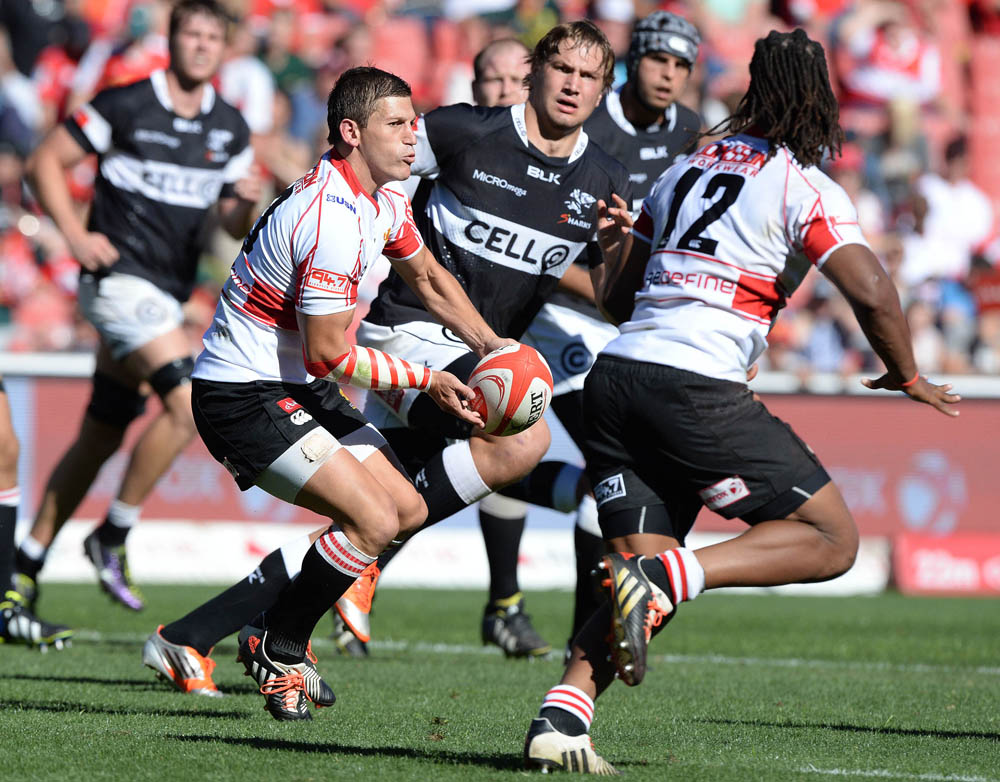He's got balls: Lions coach Johan Ackermann.
It is an irony surely not lost on Johan Ackermann that the week of the Currie Cup final happened to coincide with the release of John Mitchell’s autobiography. For Ackermann was the man left holding the baby when Mitchell was suspended in June 2012 from coaching the Lions.
It took a gang of lawyers and six months for the union to sever ties with Mitchell, a former All Blacks coach, but it took much longer for Ackermann to make the Lions competitive on the field again.
In many ways the Lions are the team of the season in this country and that is irrespective of whether they win or lose against Western Province at Newlands on Saturday. Last year the Lions did not play Super Rugby, ceding their position to the Kings. This year the boot was on the other foot, but the Lions were quickly installed by the bookmakers as favourites to finish stone last.
Instead, they won four of their first six games and, in a heady but brief period in late March, topped the combined log. In all they won seven games, the same number as the Bulls, who finished second in the South African section. So they took some momentum into the Currie Cup, together with a largely unchanged squad of players.
Even so, the Lions were able to stay under the radar because of the absence of “marquee” players on the field. It was only when they butchered the Cheetahs and the Sharks in successive weeks at Ellis Park that people began to sit up and take notice. Both victories were notable for a style of play somewhat closer to Barbarian rugby than the “koppestamp” norm.
Tsunami
Swys de Bruin is Ackermann’s assistant at the Lions and he explained why the Lions had adopted a more expansive style. “When I arrived in February last year we got hammered by the Bulls in a friendly in Soweto and it felt like the union had been hit by a tsunami. So many players had left that Ackers and I had to start again from scratch. We didn’t have the big players who can run over opponents, so we decided to play a brand of rugby that would suit the players we had; in short, we put the boot away.”
De Bruin was fortunate in one sense, inasmuch as he was aware of a number of talented players on the fringes of provincial representation who had not been given a fair opportunity. Having worked for nine years at the Sharks academy, De Bruin developed an acute eye for potential. Where others saw the Lions squad as a depository for those who couldn’t make it at a major union, Ackermann and De Bruin saw unrealised potential.
The captaincy passed to Warren Whiteley, whose game responded to the challenge and propelled him into the Springbok squad. Franco Mostert and Warwick Tecklenburg were important signings from the Bulls, while Robbie and Andries Coetzee were with Tuks. Ross Cronje, Howard Mnisi, MB Lusaseni, Mark Richards and Julian Redelinghuys had all come through the Sharks academy. The jewel in the crown was Marnitz Boshoff.

Marnitz Boshoff, jewel in the crown of the Lions. (Getty)
The Bulls could not find a place for the Nelspruit-born Boshoff and he came to the Lions after a stint with Griquas. Boshoff’s previously buried attacking potential came to the fore when De Bruin persuaded him to play a few friendly games at fullback and upon his return to flyhalf he was suddenly a bird uncaged.
Melting pot
It would be unfair, however, to suggest that the current Lions’ success is entirely owed to imports. Tighthead prop Ruan Dreyer went to Monument High School in Krugersdorp, while openside flank Jaco Kriel came to the union through the University of Johannesburg, after being head boy at Standerton High School.
It is undeniably a melting pot, however, and Ackermann concedes that the most important part of the mix is team spirit. “In both training and match situations, the players have displayed a willingness to work hard for one another and have truly bought into our team culture. There is a strong sense of one for all and all for one in this side. As a coach, one’s job is made that much easier when the players require no added motivation to succeed.”
De Bruin said that the players responded to Ackermann because: “What you see is what you get. His honesty is what stands out; he won’t tell management one thing and a player a different story.”
Ackermann put it this way: “I would like to think that I create an easy-going, fun atmosphere and a freedom which allows my coaching staff and players an opportunity to speak freely whether sharing advice or offering opinion. I strongly believe in making collective decisions which best benefit the team.”
That “fun atmosphere” was not always obvious in Ackermann’s playing days. He was the epitome of the strong, silent type, but a man you wanted on your side. There is a story dating back to Ackermann’s time with the Cats when the team was on tour in Australia. On the bus one day someone made a remark he took exception to and there was much concomitant laughter. He walked to the front of the bus, took the microphone from the driver and said (in Afrikaans, naturally): “Make a queue. I don’t want to go looking for anyone.” No one moved and the bus journey continued in silence.
Respect is earned the hard way and Ackermann has it in spades.